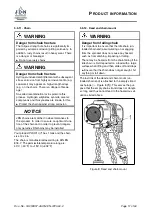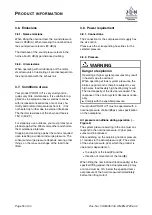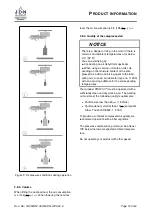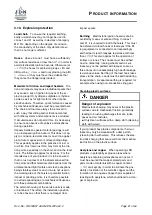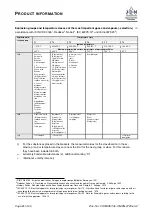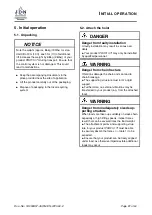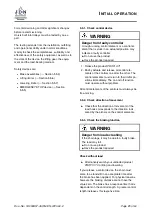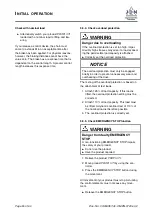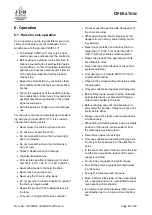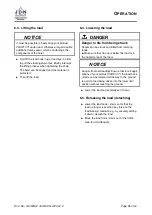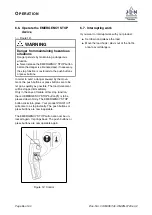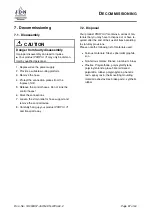
P
RODUCT INFORMATION
Decision criteria for selecting the correct JDN products in explosion-hazardous areas
Explosion groups for gases and vapours
Zone
Version
∗
Operation
∗∗
(cf. explosion groups and temperature classes for the most
important gases and vapours)
II A
2
A
E
1
A
E
II B (X)
except hydrogen sulphide, ethylene oxide
2
A
E
(highly flammable)
1
A
FS
E
II B
2
A
FS
D
E
1
A
FS
D
E
II C / T4
2
A
FS
D
E
1
A
FS
FSR D
E
II C / T6
2
A
FS
D
E
T
1
A
FS
FSR D
E
T
Potentially explosive dusts
Zone
Version
∗
Operation
∗∗
Normal industrial dusts
22
A
E
21
A
E
Light metal or impact-sensitive dusts
22
A
FS
D
E
21
A
FS
D
E
∗
:
Version features (manufacturer’s responsibility):
A:
The chain is made of zinc-plated steel, metal controls are conductively connected to the hoist. This
is part of the standard equipment. For technological reasons, a zinc-plated version of the chain
in the size 32 x 90 is not available. This is only used for the extremely slow-running chain drives
of large hoists, so that the sliding velocities for potential friction points between the chain and the
surroundings remain well below 1 m/s.
FS: Hoists “with increased spark protection”: Copper-plated load hook and bottom flange with brass
safety catch.
FSR:Running gear “with increased spark protection”: Running wheels for trolleys and cranes are made
of bronze.
∗∗
:
Instructions for safe operation (operator’s responsibility):
D:
Ignition hazards are not to be expected if the hoist or crane is used as intended. Friction and im-
pacts in the working area of the chain that do not result from the intended use of the hoist or crane
and which result in sparking must be excluded, or an absence of gas in the operating area must
be ensured. This means, for example, the chain, the bottom block and the load hook must be pre-
vented from swinging against surrounding objects or that a gas-free environment must be ensured.
E:
Friction, impact and grinding points involving combinations of light metal and steel or cast iron must
not be present in the hoist’s operating area.
T:
Ambient temperature and the type of operation must be examined separately.
Doc.-No.: VA053957-40-OM-EN-0720-60-2
Page
23
of 60









